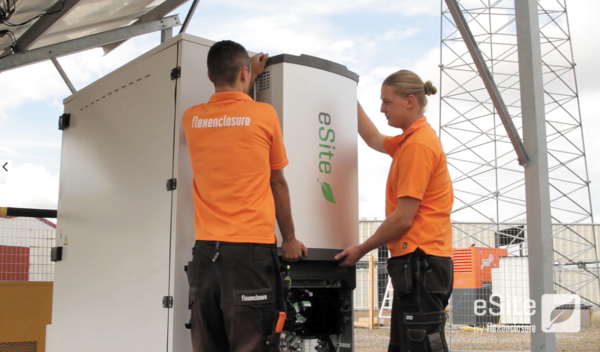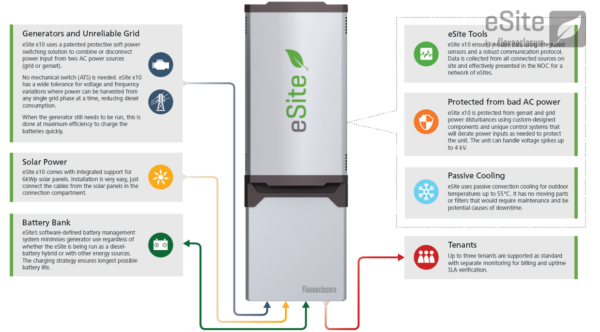Regardless of whether a tower company or an MNO is establishing a new tower site or upgrading an existing one, a hybrid power system is the clear answer to being able to balance customers demands for network reach and reliability and operational demands
Solar-only Tower Sites – A Recipe for Success or Failure?
Riana Donaldson | Flexenclosure
The mobile telecommunications landscape has been changing over the past few years, particularly in the world’s developing economies. With customers demanding expanded rural network rollout and cost competition putting pressure on capital expenditure (CAPEX) and operating expenses (OPEX), mobile network operators (MNOs) have been looking for ways to reduce their costs – particularly at tower sites where the cost of powering the active telecoms equipment can be prohibitively expensive.

Many MNOs and tower companies have started taking the route of outsourcing their site power requirements to specialist energy service companies (ESCOs) while others are choosing to directly invest in new power equipment themselves. Either way, the solution of choice has been to deploy hybrid power systems, using a combination of diesel genset, grid (where available) and renewable energy sources.
But why not simply use 100 percent solar systems with a battery bank? In many parts of the developing world there is no shortage of sunshine hours; solar-only systems would be cheaper to source; potentially faster to roll out; and would provide a great corporate environmental responsibility story for the operator.
No solar performance guarantees
The problem with this scenario is of course that even in the sunniest parts of the world, there is no guarantee that the sun will always shine and a few overcast days would certainly spell service shutdown. Worse still would be a dust or sand storm – an event that would not only prevent solar energy harvesting while it was happening, but would also reduce the performance of the solar panels after the fact due to the accumulated debris on them.
Keeping the battery bank healthy
A steady system load will constantly be draining the batteries and – notwithstanding the point above about no solar performance guarantees – even in perfect sunny conditions solar energy alone will not be enough to maintain the battery bank at an optimal charge level. If this continues over time and the batteries are not periodically returned to full charge, their performance and lifetime will both be significantly reduced.
Load fluctuation
This problem will be compounded if the system load fluctuates to a point where the solar panels and battery bank are fundamentally under-dimensioned for the demand they are experiencing. In this case the end result will be short-term network downtime, long-term battery damage and a failure to achieve the objectives we began with of increased customer satisfaction and reduced power-related expenditure.
The hybrid answer
While running tower sites purely on solar power is an admirable goal – both environmentally and economically – it’s clear that it simply isn’t possible today. Regardless of whether a tower company or an MNO is establishing a new tower site or upgrading an existing one, a hybrid power system (such as Flexenclosure’s eSite x10) is the clear answer to being able to balance customers’ demands for network reach and reliability and operational demands for reduced site energy costs.

A hybrid power system can combine a renewable energy source such as solar with second source – typically a diesel generator and/or grid power – that can supply the additional amps required to fully charge the batteries when necessary. The generator will not need to run constantly or be used to supply power directly to the load. Rather, it will simply need to be used for an hour or two a day to keep the batteries charged and healthy.
A hybrid power system that is preconfigured for solar, as well as compact and lightweight, is the ideal solution for ensuring network uptime while maximising deployment speed and minimising power costs.
.jpg)
About Riana Donaldson
Riana Donaldson is a successful telecommunications professional, with a career spanning more than 15 years in the industry. Her experience includes general management, project management, technical support, logistics and sales. She has held senior roles based in South Africa and Ghana, with Vodacom and Vodafone. Based in Pretoria, South Africa, Riana is Flexenclosure's regional sales director for Africa and a portion of the Middle East. Her a primary focus is on entering and developing new markets for hybrid power systems. Riana holds a Master's degree in Engineering from the University of Pretoria in South Africa.
The content & opinions in this article are the author’s and do not necessarily represent the views of AltEnergyMag
Comments (1)
Featured Product

